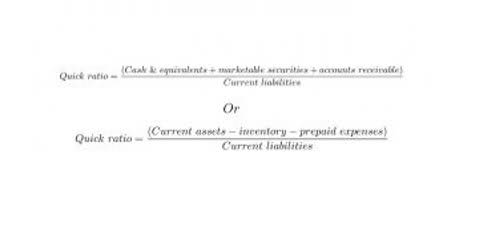
I tried Credit Card Audit Trail, where this information USED to appear, but since I closed our old company file due to file Bookstime size, and opened a new company file, this feature no longer seems to work. I can see the day I initiated the new file, but no log in/out information appears in the report. Every time I contact support for this, no one is able to help me figure out why that no longer works. This really should be a simple thing to track, especially since the information exists somewhere and was formerly tracked on a report that no longer seems to work.
- This really should be a simple thing to track, especially since the information exists somewhere and was formerly tracked on a report that no longer seems to work.
- I need a memorized report for certain users to access on a daily basis to see their OWN transaction list of items they created.
- Stay in touch with me if you have follow-up questions about viewing your audit trail report.
- Additionally, you can utilize the Topics and Training tab above to search for some features, videos, and articles to learn more about QuickBooks like banking and recording transactions.
- Method is an all-in-one customer relationship management (CRM) solution tailored for QuickBooks users.
- Users can track changes to individual transactions, such as payments, invoices, and sales.
Step 1: Go to the Company Menu

If you are looking forward to starting an audit trail and need some ideas, you are at the right place. We can follow up on the transactions via accounts payable and the electronic payment or check made for the amount settlement. We all know, an audit trail contains a record that keeps the compulsory documentation. Few investors or lenders might need an audited financial statement. We can rush the process and diminish the cost of an audit by maintaining clear records of all transactions. QuickBooks company files can become quite big because of the huge number of closed transactions.
How to View Transaction Changes in the Audit History
- By filtering data by customers, vendors, or transaction types, you can obtain a more focused view of their transaction records.
- In this article we’ll discuss five different audit reports that QuickBooks provides, as well as show you some easier ways to mine the data within these reports.
- Some events are not transactions (perhaps they are actions taken on vendors or employee).
- Here, we are able to get choices of modification of the QuickBooks audit trail report.
- This extensive record captures a wide range of data, such as sales transactions, invoice creation and modification, inventory adjustments, payroll changes, and other financial activities.
- It allows users to trace the sequence of actions within the system, providing transparency and visibility into every change or entry.
From understanding how to view and run the audit trail to checking transaction history and identifying the users responsible for specific entries, we will cover it all. By viewing the audit log, users can ensure the accuracy and integrity of their financial data, detect any unauthorized or erroneous transactions, and trace the sequence of events leading to discrepancies. After running the report, users can customize the date range and other parameters to filter the results according to their specific requirements. This allows them to view a detailed history of changes and transactions, providing valuable qbo login insights into the financial activities within the system.

What Information Can You Find in the QuickBooks Desktop Audit Trail?
If you are on a server with multi-user access you might be able to track server logins. Now, Select the Filter panel and use the fields to select the User, Date, or Events filter. However, if the transaction is lost due to loss of data or some technical glitch, it cannot be restored through the Audit Trail feature. In such a case, it can only be restored by using a backup file. You can restore a transaction that you might have deleted intentionally or accidentally using the QuickBooks Audit Trail feature by simply re-entering the data. Here in this screen, we can rectify or edit what appears on the header and the footer of the report.

I’ll show you how to use the QuickBooks audit trail to track changes made to your company file. I’ll guide you on how to access the audit log and how you can use the filter options to locate specific entries you want to review. I’ll also provide some tips on how you can effectively review changes and share the benefits of using the audit trail in QuickBooks. This extensive record captures a wide range of data, such as sales transactions, invoice creation and modification, inventory adjustments, payroll changes, and other financial activities. It logs user login/logout times, access privilege modifications, and user-generated entries, offering transparency into who accessed the system and the actions performed.
- @JasroV The Audit Trail is not created for general users to access.
- To access the transaction history, users can navigate to the Reports menu and select Custom Transaction Detail Report.
- Once selected, you can customize the report by choosing the relevant date range and filters to refine the information you need.
- If you have multiple users with access to your QuickBooks Desktop account, turning on the audit trail is an important way to keep track of who makes what changes in QuickBooks.
- In this case, it’s only accessible to certain users based on your company preferences.
How to Run an Audit Trail in QuickBooks Desktop?

Then check or uncheck the checkboxes under the “Columns” heading in the income statement drop-down menu to show or hide those columns. To set the number of entries to show per page in the audit log, select an option in the “Page Size” section of the drop-down menu. For most transactions or events, select View in the History column to open the audit history. However, both of these options will not let you examine the details of your transaction history data, such as past checks.


